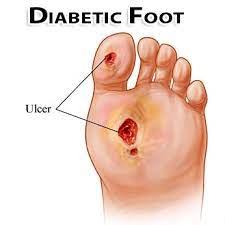
Exploring the Efficacy of Hyperbaric Oxygen Therapy for Diabetic Foot Wounds
Understanding Diabetic Foot Wounds
Diabetic foot wounds are a common and serious complication of diabetes, characterized by ulcers, sores, or cuts on the feet that fail to heal properly. They often develop due to poor circulation, nerve damage (neuropathy), and impaired immune function, which are common complications of diabetes. Left untreated, diabetic foot wounds can lead to infection, tissue damage, and, in severe cases, amputation. Managing diabetic foot wounds requires a comprehensive approach to wound care and may involve various medical interventions.
Introduction to Hyperbaric Oxygen Therapy (HBOT)
Hyperbaric oxygen therapy (HBOT) is a medical treatment that involves breathing pure oxygen in a pressurized chamber. This increases the amount of oxygen dissolved in the bloodstream, which can promote healing and tissue repair. HBOT is used to treat a wide range of medical conditions, including diabetic foot wounds, where adequate oxygenation is essential for wound healing.
How HBOT Supports Healing in Diabetic Foot Wounds
HBOT enhances wound healing in diabetic foot wounds through several mechanisms. Increased oxygen levels in the bloodstream promote the formation of new blood vessels (angiogenesis), improving circulation to the affected area. This helps deliver oxygen and nutrients necessary for tissue repair and growth. Additionally, HBOT stimulates the production of collagen, a protein essential for wound healing, and enhances the activity of immune cells, reducing the risk of infection.
Clinical Evidence Supporting HBOT for Diabetic Foot Wounds
Studies have demonstrated the efficacy of HBOT in treating diabetic foot wounds. A meta-analysis published in the journal Diabetes Care concluded that HBOT significantly improves the healing rate and reduces the risk of major amputations in patients with diabetic foot ulcers. Additionally, randomized controlled trials and observational studies have reported favorable outcomes with HBOT, including faster wound healing, reduced infection rates, and improved quality of life.
Key Considerations for HBOT Treatment
Before undergoing HBOT for diabetic foot wounds, patients should undergo a thorough evaluation by a healthcare professional experienced in wound care and hyperbaric medicine. Treatment protocols may vary depending on the severity and characteristics of the wound, but typically involve a series of HBOT sessions conducted in a specialized hyperbaric chamber. Close monitoring of the wound progress and regular follow-up evaluations are essential to assess treatment response and adjust the therapy as needed.
Integrating HBOT into Diabetic Foot Wound Management
HBOT should be integrated into a comprehensive diabetic foot wound management plan that addresses all aspects of wound care, including infection control, offloading pressure, and optimizing glycemic control. In addition to HBOT, treatment may include debridement (removal of dead tissue), wound dressings, antibiotics, and surgical interventions if necessary. Patients should also be educated on proper foot care and self-management strategies to prevent future complications.
Hyperbaric oxygen therapy offers a valuable adjunctive treatment option for individuals with diabetic foot wounds, helping to promote healing, reduce the risk of complications, and improve outcomes. By enhancing tissue oxygenation, stimulating angiogenesis, and supporting the body’s natural healing processes, HBOT plays a crucial role in the multidisciplinary approach to diabetic foot wound management.